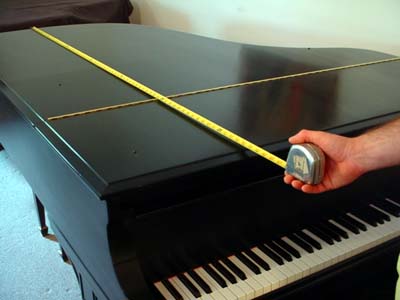
What model Steinway grand / upright piano do I have?
July 28, 2016What is the age of my Steinway piano? How old is my Steinway piano? We get these questions on a daily basis and we can help you with this!
In order to pinpoint the age of your Steinway piano, you must first locate its serial number. The serial number for Steinway pianos are located in several different places. The easiest place to find it is on the gold colored harp inside the piano. It is normally located between the bass and treble tuning pins, in the “well” spot on the harp.
You will first have to open the pianos lid, then stand in front of the piano and either push the music desk forward (to reveal the number) or remove the piano’s music desk from the piano. Normally the rack comes out of the piano by gently pulling it towards you, for most older Steinways (1930s and older.) For newer Steinways 1940s and up you can either gently push the music desk all the way forward to reveal the pianos serial number, or you have to gently move the music desk back and forth with a little up pressure so the underside of the music rack’s “fingers” find the little notch on the music rack glides so it releases up and out of the piano.
For Steinway grand pianos you want to look for this:
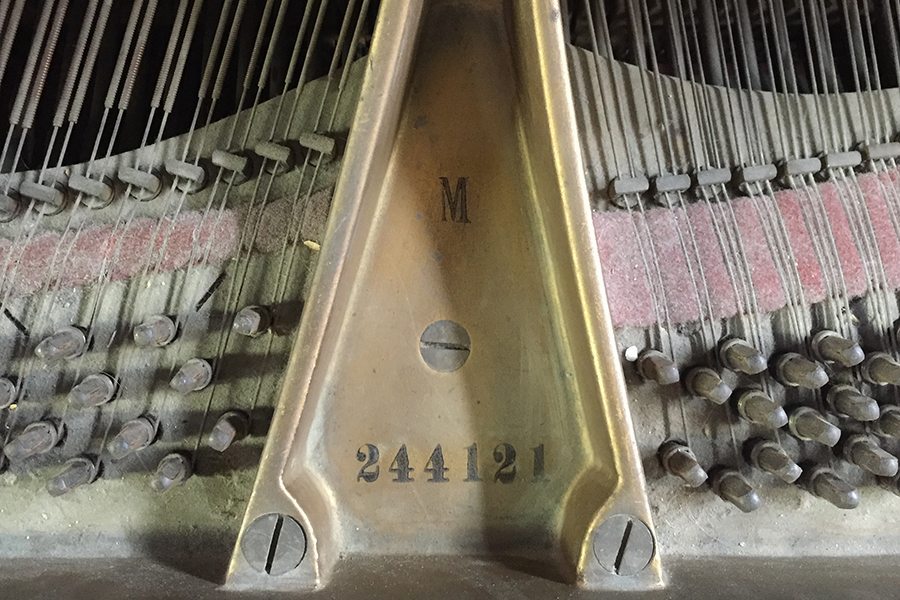
So… this Steinway grand’s serial number is #244.121, using the chart below you can see that this piano was manufactured in circa 1926. Also the Letter stamped in ink above the serial number is the model of the piano. In this case this is a model “M” which is 5’7” in length.
How old is my Steinway piano?
Use the Steinway piano serial numbers below to see the age of your piano:
Steinway Piano Serial Numbers
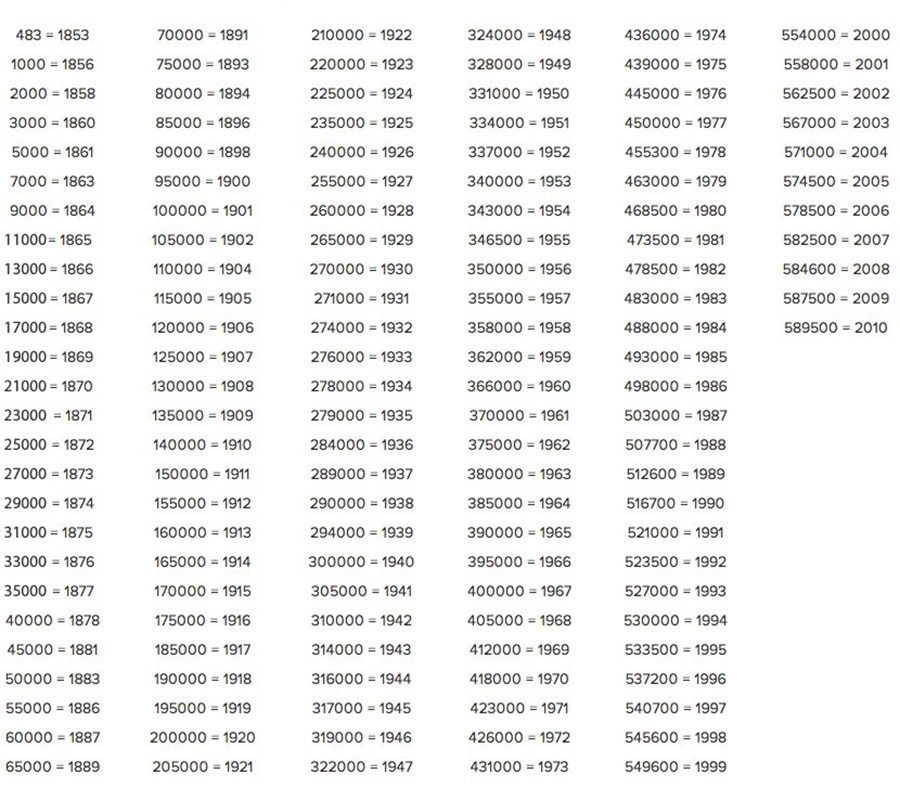
For Steinway upright pianos you need to lift the pianos lid and look inside the piano, normally the serial number along with the model will be stamped in ink inside the piano, also on its harp. The piano below dates to circa 1900.
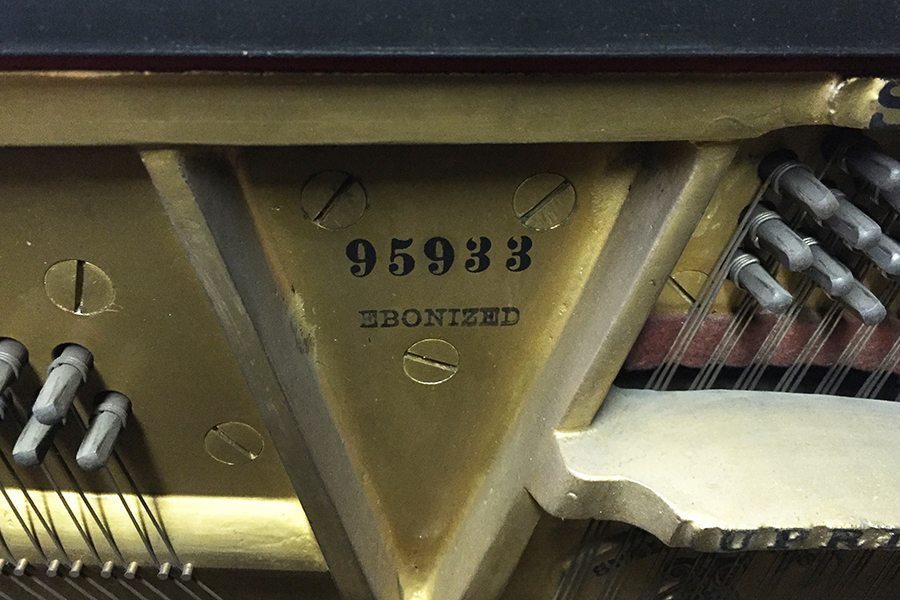
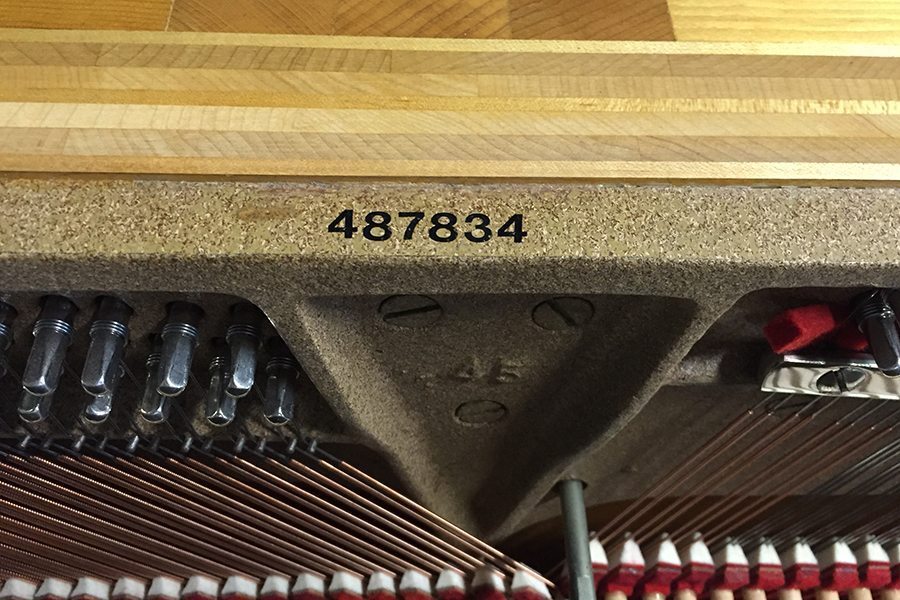

If you are having trouble locating the serial number for your Steinway grand piano, there are other places you can look. Two other common places on are the front side of the pianos action and also on the backside of the “keyslip”.
Lets start with the keyslip. If you were to sit in front of the piano and place your hands on the keys, then bring your hand towards yourself, the last piece of wood your fingers would cross as they leave the keyboard is a piece of wood called the Key-Slip. This piece of wood is the same length as the pianos keyboard and is about 2 inches in height. It is attached to the front of the piano by little pins that are built into it, that fit into 3-4 holes in the keybed, and two slots that run over two screw heads that stick out of the “side-blocks”
The Key-Slip is usually very easy to remove as it just “sits” in place. Start on either end of it and apply a little upward pressure on it, once it starts to move up, grab the middle portion of it and try to slowly wiggle it up evenly as to not bend or break anything. If it appears really tight, it could of swelled a little due to humidity and might need extra pressure upward to remove.
Once you remove the keyslip turn it over and look for some numbers that are pressed into the wood, it will normally look like this:
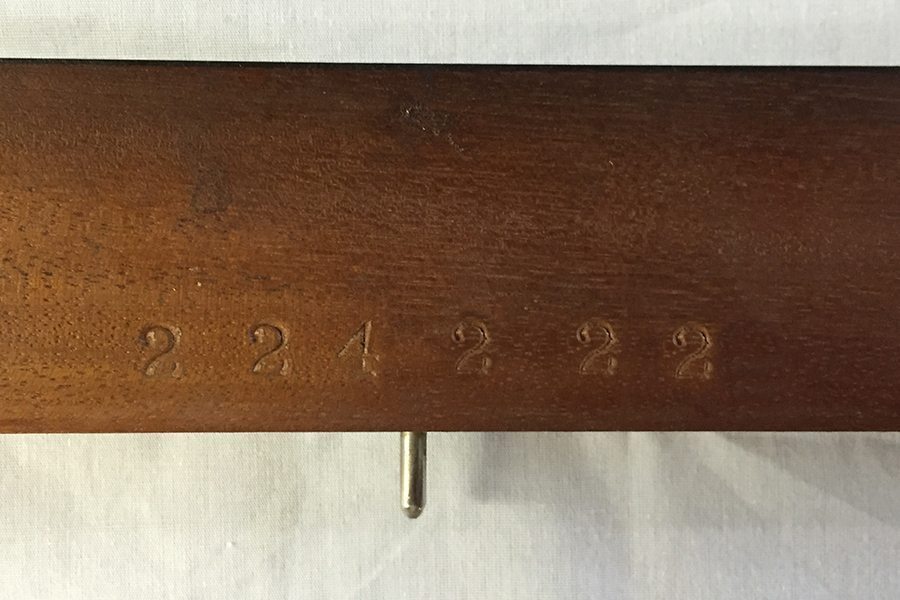
If you don’t see any pressed in numbers on the keyslip, its now time to look at the front of the now exposed action keybed, normally dead center you will see the serial number stamped in ink, it will look like this:
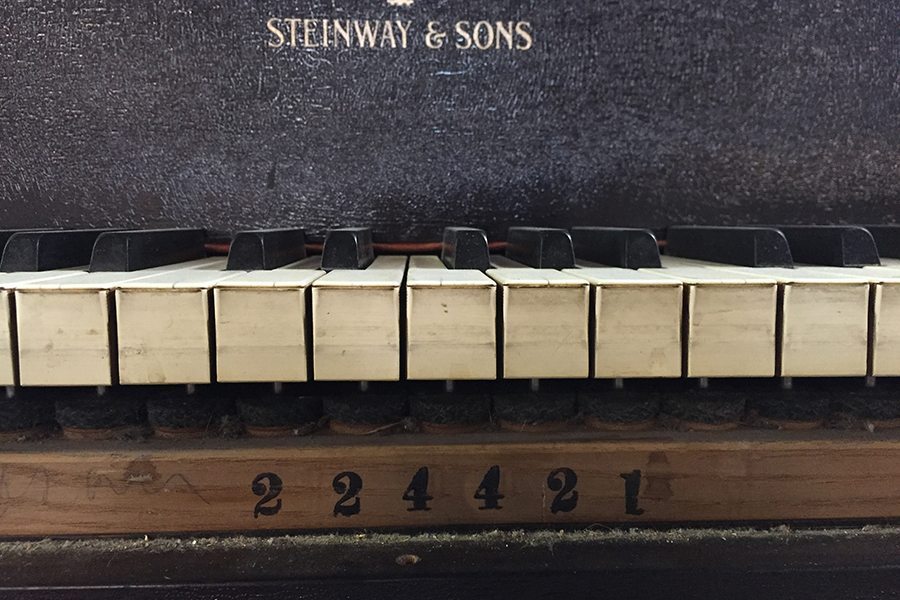
There are other spots to look, but these are the most common. You can also look at the underside of the music desk and sometimes on the bottom part of the music rack (the part that you rest your sheet music on.) Also on the bottom part of the “lid stick” and lastly if you crawl under the piano with a flash light, there is a long wooden beam that runs the length of the keyboard, under the keybed (if you were sitting in front of the piano in the playing position, your knees would be very close to it) sometimes a serial number can be seen here stamped into the wood.
We hope this was helpful, if you are still stumped, give us a call and we will help.
Oh and by the way, we are in the market to buy Steinway grand and upright pianos, if you are in the market to sell!
Call: 877.746.1726 Text: 607.215.6632 CountryPiano@gmail.com
